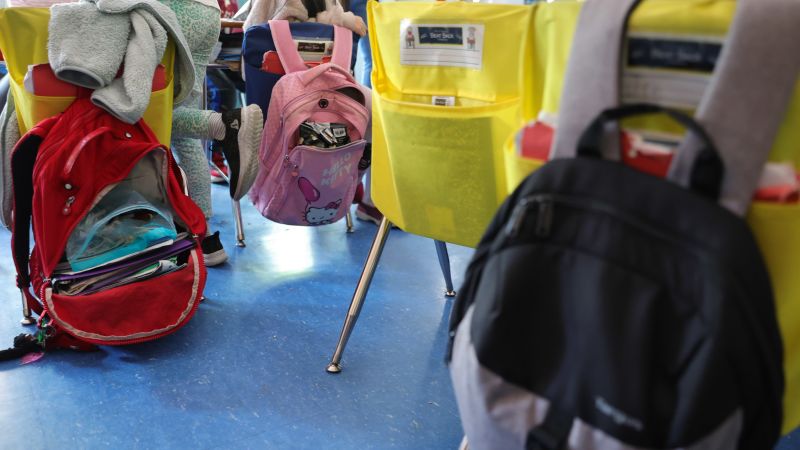As schools across the country face the impending end of a pandemic aid package that provided significant federal funding for K-12 education, many are announcing layoffs of teachers and staff. Districts are struggling with financial challenges such as enrollment declines, rising costs, and the expiration of the funding by the end of September. This has led to budget shortfalls and the need to make difficult decisions about reducing positions in schools. Layoffs are being considered in districts like Missoula, Montana, and Arlington, Texas, where federal pandemic aid-funded positions are being cut, affecting services like after-school care, tutoring, and mental health support.
In response to the end of federal pandemic aid, some districts are facing significant reductions in staff positions. For example, Hartford, Connecticut, has notified 30 teachers and 79 other staff members of job losses, resulting in a total of 384 positions being cut. Enrollment declines in Hartford Public Schools, along with the impact of the funding cliff, have exacerbated the long-term challenges facing the district. Superintendent Leslie Torres-Rodriguez highlighted how the decline in the school-age population and enrollment policy changes have contributed to the current situation. The end of federal funding has created challenges for districts that were relying on the money to support various programs and services.
Since the start of the Covid-19 pandemic, K-12 schools have received substantial federal funding to address the challenges brought on by the public health crisis. The aid packages provided funding for schools to address needs like reopening school buildings, purchasing safety supplies, and addressing learning loss through tutoring programs and extended school days. With local school boards having the flexibility to decide how to allocate the funds, districts have had the ability to create new positions, including classroom teachers, with the federal funding. The coming end of the funding has raised concerns about the sustainability of these positions going forward.
The potential for teacher layoffs as districts navigate the end of federal pandemic aid is a concern, especially given the staffing challenges many districts have faced. While some districts have struggled to fill open positions, others have been adding staff positions with the aid money, leading to increased staff levels. If districts were to revert to pre-pandemic staffing levels, an estimated 384,000 full-time staff could face layoffs. The impact of these layoffs could disproportionately affect students of color and those attending higher-poverty districts, as well as recent hires who may be the first to lose their jobs. Recommendations have been made to consider teacher performance and protect high-demand staff like math and special education teachers in the event of layoffs.
As districts grapple with the financial implications of the end of federal funding, concerns have been raised about the impact on staffing levels and the potential need for teacher layoffs. The distribution of aid based on the number of low-income families means that districts serving disadvantaged students may face the greatest budget shortfalls. It is essential for districts to consider the implications of layoffs on student outcomes and prioritize effective teachers in the decision-making process. The funding cliff created by the expiration of the aid package presents challenges for schools as they try to maintain essential services and programs while also addressing budget shortfalls and enrollment declines.


